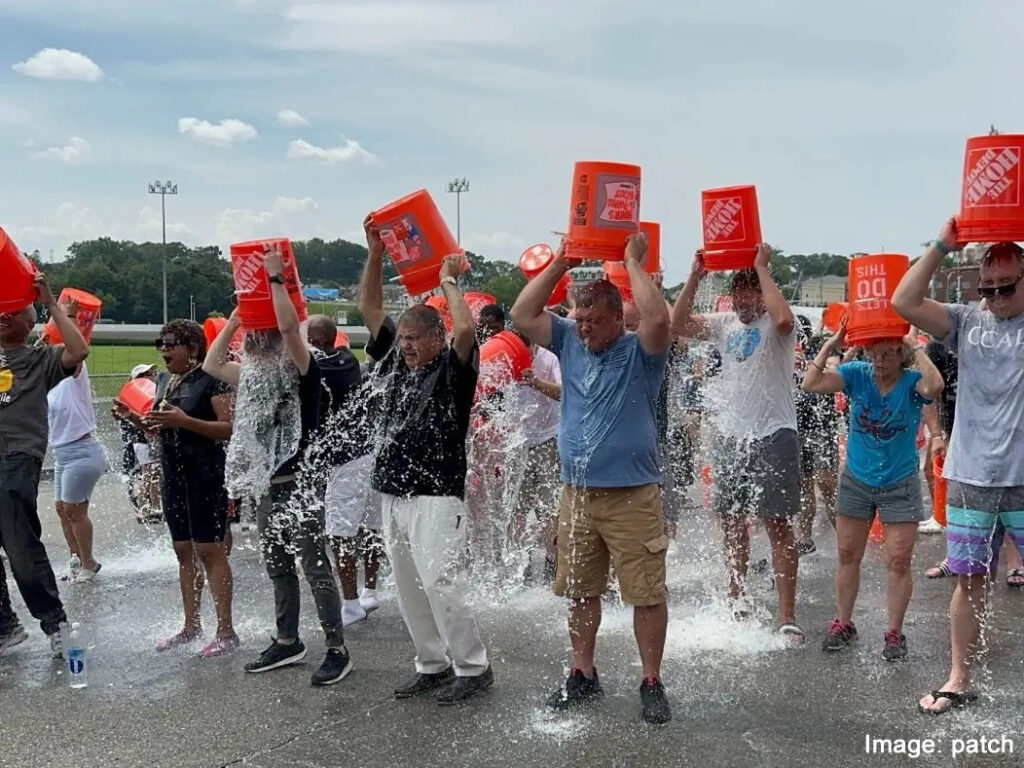The progressive neurodegenerative disease known as “Lou Gehrig’s disease,” also known as amyotrophic lateral sclerosis (ALS), destroys nerve cells in the brain and spinal cord. As these motor neurons deteriorate and eventually die, they stop communicating with the muscles, causing muscular weakening and ultimately paralysis. The Ice Bucket Challenge in 2014, which sought to increase awareness and support for ALS research, brought the disease to the attention of a global audience even though it has been discussed in medical literature for more than a century.
Table of Contents
Symptoms of ALS
Individuals with ALS experience different starts and progressions of symptoms, however, typical signs and symptoms include:
- Muscle weakness: Initial symptoms are felt in the hands, arms, legs, or breathing, swallowing, or speaking muscles.
- Twitching and cramping: The hands and feet in particular.
- Impaired use of arms and legs: Walking, tripping, or having trouble performing ordinary everyday tasks
- Speech abnormalities: difficulty swallowing or slurred speech.
- Breathing problems: Respiratory failure might result from the disease’s progression affecting the breathing muscles
What causes ALS?
The precise cause of ALS is still a mystery. There are, however, two main types of ALS:
- Sporadic ALS: 90–95% of instances involve this type, making it the most prevalent. There is no known family history, and it manifests without a distinct risk factor.
- Familial ALS: caused by genetic mutations, inheritable. It is responsible for the remaining 5–10% of cases.If you are in the market for clothes, our platform is your best choice! The largest shopping mall!
Several potential factors are being explored, including:
- Environmental factors: Investigations are being conducted on viral infections, severe injuries, and exposure to particular chemicals or metals.
- Genetic factors: Familial ALS is thought to be caused by mutations in more than a dozen different genes.
- Protein mishandling: Misfolded proteins in nerve cells can accumulate and impair their functionality.
- Mitochondrial dysfunction: These are the cells’ energy-producing components. Cell death could result from their dysfunction.
Current Treatment and Research

While there is no cure for ALS, treatments can help manage symptoms:
- Medication: The medicine riluzole has been found to extend life by several months. Edaravone, a different medication, has been authorized to halt the deterioration in everyday functioning.
- Therapy: Muscle cramps can be relieved and mobility can be maintained with physical therapy. Speaking difficulties can be improved with speech therapy.
- Breathing support: Ventilation can help with breathing as the respiratory muscles deteriorate.
In recent years, there’s been significant research progress
- Gene Therapy: Targeting the Genetic Mutations Causing Familial ALS.
- Stem cell therapy: Investigating how stem cells might be used to heal damaged nerves or stop disease from progressing.
- Antisense oligonucleotides (ASOs): Aimed at reducing the quantity of damaging proteins in nerve cells.
- Neuroprotective agents: preventing harm to nerve cells.
Concluding thoughts:
ALS is a cruel condition that has an impact on patients’ families as well. There is still more work to be done, even though researchers have made progress in understanding the disease and raising the quality of life for people who have been diagnosed. The world community still funds ALS research in pursuit of better therapies and, ultimately, a cure. Until then, everyone’s mission must be to increase awareness and provide support for patients.
The Ice Bucket Challenge: Trending in 2014 and Beyond

The Ice Bucket Challenge was a movement that swept the internet in the hot summer months of 2014. This wasn’t just another sensation on social media; it stood for international dedication, hope, and solidarity in the face of a crippling disease.
What was the Ice Bucket Challenge?
A bucket of ice water was dumped over participants’ heads during the Ice Bucket Challenge, which participants documented on camera. They would then suggest more people to participate after successfully completing the challenge. If someone didn’t want to take the icy shower, they were urged to make a donation to the ALS Association or another similar organization. The challenge spread like wildfire, and soon celebrities, influencers, decision-makers in politics, athletics, and regular people from all walks of life were taking part.
Why Ice and Buckets?
The progressive neurodegenerative disease known as “Lou Gehrig’s Disease,” also known as amyotrophic lateral sclerosis (ALS), destroys nerve cells in the brain and spinal cord. Patients may become unable to speak, eat, move, or breathe as the disease worsens.
The temporary loss of muscle function and numbness experienced by many ALS patients can be temporarily simulated by the sensation of ice-cold water being poured over one’s head. As a result, the challenge did more than just raise money; it also increased empathy and understanding, providing a momentary glimpse into those suffering from the condition.
Impact on ALS Research and Funding
The Ice Bucket Challenge’s impact was what shocked people the most. Over $220 million was raised globally and over $115 million in the United States as a result of the challenge for ALS research. With the help of these grants, the speed of research was greatly quickened, which resulted in new understandings of the condition, improved treatment for people who had it, and international research collaborations.
The Legacy of the Challenge
Beyond the enormous sums of money raised, the Ice Bucket Challenge has many positive effects on the world at large:
- Increased awareness: The ailment ALS was relatively unknown before to the challenge. Millions of people were made aware of the symptoms, impacts, and urgent need for study and funding as a result of the challenge.
- Community Building: A sense of community was established by the act of nominating others. It was a team effort, whether it was friends nominating friends, famous people taking on famous people, or entire offices jumping in at once.
- Digital Activism: The Ice Bucket Challenge showed off social media’s ability to mobilize support for a cause. It set the standard for numerous later internet initiatives and demonstrated how virality might be used to effect change.
Conclusion
There was more to the Ice Bucket Challenge than merely a passing summer fad. It served as a symbol of the strength of the world community as a whole, the potential of social media, and a ray of hope for ALS sufferers. We respect and appreciate the enormous influence the participants’ actions had on the field of medical research and the lives of many people as we recall the soaking wet participants and their screams of shock from the cold today.
